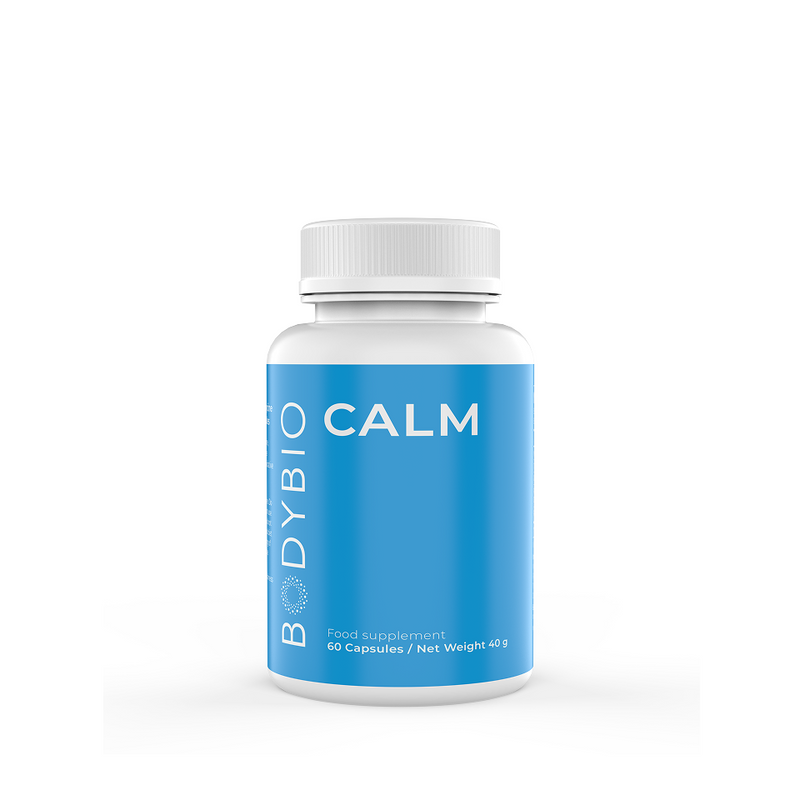How to Activate the Parasympathetic Nervous System: Practical Tips for Daily Stress
Key Takeaways:
Key Points:
- Studies show that stress is a common risk factor for most modern diseases. But most of us don’t know how to manage stress on a daily basis.
- Activating the parasympathetic nervous system is one way we can take stress management into our own hands — training our bodies to get out of “fight or flight” and back into “rest and digest.”
- Some tools to activate the parasympathetic nervous system include PEMF therapy, deep breathing, and vagus nerve stimulation. That said, it’s important to get to the root of the issue and either reduce your stress or boost your threshold to handle it.
Modern medicine has taught us that inflammation is a driving factor in every chronic disease.
But why are so many of us struggling with chronic inflammation? One major reason is unresolved stress.
A recent study confirms this idea, explaining that “stress is the common risk factor for 75-90% of diseases.” In science speak, that’s a significant correlation!
And, it makes sense. From a primal perspective, the human body is only meant to manage stress for short periods (think: getting chased by a predator).
Today, our lives aren’t usually threatened by large animals or other tribes trying to steal our food. Instead, we’re increasingly disconnected from nature and encouraged to perform in fast-paced (aka, high-stress) environments. It’s more like a million little stressors piling up all the time, rather than one big life-threatening stressor that comes and goes. Our bodies can’t tell the difference between these two scenarios. To the body, stress is stress and must be dealt with no matter what the cause is.
So, how do you actively decrease stress when you can’t change your environment?
We recommend using a few different strategies to activate the parasympathetic nervous system.
Table of Contents:
- What the Parasympathetic Nervous System Does
- How to Activate the Parasympathetic Nervous System
- A Daily Solution for Stress Management
The Parasympathetic Nervous System’s Function
The nervous system has thousands of different functions in the body. Its main purpose is to help you handle threats effectively and to return to a state of calm once you're in a safe environment.
The sympathetic nervous system is responsible for the “flight or fight” response, which is a mechanism your body triggers to protect you during moments of danger. This is a powerful response — and one our ancestors relied on during hunting or famine, times of real, life-threatening risk where we needed to act in a certain way to stay alive.
That said, the body can’t differentiate between a primal threat (famine) and your boss yelling because you’re late on a deadline. If you experience constant, chronic stress at home or work, your body might get locked in a state of fight or flight — unable to return to relaxation. Over time, this can result in uncomfortable symptoms or systemic inflammation since your body is constantly using all of its resources to keep you safe.
That’s where the parasympathetic nervous system comes in. It activates “rest and digest” mode, which is the ultimate feeling of calm and safety. You operate at your best when the parasympathetic nervous system is activated, able to think clearly, balance energy levels, and feel most like yourself. The parasympathetic nervous system turns on when it perceives your environment as safe.
If you feel stuck in fight or flight or experience high stress often, there are tools you can use to activate the parasympathetic nervous system and reverse chronic stress.
9 Practical Ways to Activate the Parasympathetic Nervous System
The job of the nervous system is to respond to its environment. Meaning, that if you change the environment, you can also change the nervous system.
Obviously, some things are out of your control. Whether it’s a work situation, a sick family member, or just a difficult season of life, know that your nervous system is on your side. During these times, make sure you prioritize time to relax, process your emotions, and simply exist.
Here are some tools you can use to signal safety to your body and activate the parasympathetic nervous system:
1. Deep Breathing
Diaphragmatic breathing is a method of breathing through your belly rather than your chest. If you’re not sure how to do this, find an instructional YouTube video or sign up for a local meditation class. This type of breathing tends to slow the heart rate, forcing your body to slow down and process its environment (and signal “we are safe right now”). This can also stimulate the vagus nerve (a long nerve with many branches that stretches down your body and acts as the main transmitter for the parasympathetic nervous system).
2. Vagus Nerve Therapy (tVNS)
The vagus nerve is a large system of parasympathetic nerves that reach from your brain to your large intestine (making a straight line down the body with branches extending out to different organs). This nerve system helps regulate digestion, sleep, breathing, heart rate, and stress. By stimulating it, we can usually activate the parasympathetic nervous system and get the body out of fight or flight.
Vagus nerve therapy (or tVNS) is one way to stimulate the vagus nerve. A specifically programmed TENS unit delivers a low-level current of energy to the body via the ear, gently activating the vagus nerve and the parasympathetic nervous system at the same time. Previously, this therapy could only be done with an implanted device. But now there are noninvasive devices you can use at home.
3. PEMF Therapy (Pulsed Electromagnetic Fields)
A PEMF device (usually a mat you rest on or a wearable device) administers a healthy electromagnetic frequency that can help with specific concerns, like inflammation, mental stress, and increased blood flow. We are electrical beings, and when our cells are exposed to the right frequencies, it helps regulate all kinds of bodily functions. It’s a great relaxation tool that can calm the body down and activate the parasympathetic nervous system.
4. Nature Walks
Getting outside (especially in the evening or morning hours) is wonderful for your parasympathetic nervous system. Take off your shoes for extra anti-inflammatory benefits (through grounding) and pay attention to what you can see, touch, and feel.
If you find yourself in an open field, make a point to look out as far as you can see — scanning the horizon. Do this while you sit on the ground in a relaxed state and feel free to voice some positive affirmations. This can signal safety to your body, showing that there are no predators in the distance.
5. Massage
Professional massages are helpful if you experience regular pain, lymphatic distress, or carry stress in your body. You’ll be able to release inflammation and let your body benefit from a soothing touch. Speaking of physical contact, hugs are also a good way to signal safety, too. Embracing your loved ones can rapidly melt away stress.
6. Create Boundaries with Loved Ones and Colleagues
Many of these parasympathetic nervous system hacks are only temporary fixes. Signaling safety to your body for a few hours after dinner isn’t going to override chronic stress from a home or work environment. This is why it’s so important to set boundaries with those around you and create time in your day to prioritize your needs. For example, setting your work hours from 9-5 and not responding to messages or requests outside of those hours.
7. Acupuncture
The goal of acupuncture is to stimulate certain parts or systems of the body that may be energetically blocked or stagnant. Meaning, you can use acupuncture to intentionally focus on the parasympathetic nervous system and target healing. Ask your acupuncture specialist to help you manage stress.
One study makes the benefits clear. It explains, “Acupuncture treatment not only activates distinct brain regions in different kinds of diseases caused by imbalance between the sympathetic and parasympathetic activities but also modulates adaptive neurotransmitters in related brain regions to alleviate autonomic response.” In other words, acupuncture can help calm the sympathetic NS response and boost the parasympathetic NS response.
8. Increase Your Calories
To activate the parasympathetic nervous system, we’re tapping into your primal needs. If you’re dieting or restricting calories at all, your body may not be able to tell the difference between famine and calorie counting. During times of extreme stress, make sure you’re eating enough calories to signal safety to your nervous system. As you increase your caloric intake (ideally with whole-food protein, healthy fats, and carbs), you’ll also increase the nutrients that go to your cells. This is an added benefit for cells that are nutritionally depleted.
9. Essential Nutrients
Your body is wired to use up essential nutrients during seasons of extreme stress (the idea is to help you run away from predators faster). Minerals, essential fatty acids, and vitamins are quick to deplete — and need to be replenished to signal safety to the body. They’re also needed for proper cell and vagus nerve function.
Getting enough of these nutrients becomes difficult with modern diets, which can be light on nutrients and heavy on processed ingredients. We recommend supplementing with a B vitamin complex, amino acids, minerals, electrolytes, essential fatty acids, and choline (a critical nutrient for the brain and nerve signaling) as you rewire your nervous system.
Your Daily Solution for Stress Management
As you can see, there are several tools you can use to activate the parasympathetic nervous system and slowly reduce inflammation throughout the body.
But some of these solutions are only temporary. Obviously, you can’t lay on a PEMF mat all day or suddenly remove yourself from a stressful argument at home or the office to go sit in the grass. You need to deal with the core issues: either get out of the stressful environment or heighten your body’s ability to handle it. (Or probably some combination of both.)
That’s where BodyBio Calm comes in. It’s a formula made from natural stress-relieving nutrients (like adaptogens and key amino acids) that increase your body’s stress threshold. We designed it to help our primal bodies adjust better to the modern world — keeping you stay healthy, relaxed, and empowered through the challenges of daily life.
Liu, Y. Z., Wang, Y. X., & Jiang, C. L. (2017). Inflammation: The Common Pathway of Stress-Related Diseases. Frontiers in human neuroscience, 11, 316. https://doi.org/10.3389/fnhum.2017.00316
Ravi M, Miller AH, Michopoulos V. The immunology of stress and the impact of inflammation on the brain and behavior. BJPsych Adv. 2021;27(Suppl 3):158-165. https://doi.org/10.1192/bja.2020.82
Rohleder N. Stress and inflammation - The need to address the gap in the transition between acute and chronic stress effects. Psychoneuroendocrinology. 2019;105:164-171. https://doi.org/10.1016/j.psyneuen.2019.02.021
Salleh M. R. (2008). Life event, stress and illness. The Malaysian journal of medical sciences : MJMS, 15(4), 9–18.
Yap, J. Y. Y., Keatch, C., Lambert, E., Woods, W., Stoddart, P. R., & Kameneva, T. (2020). Critical Review of Transcutaneous Vagus Nerve Stimulation: Challenges for Translation to Clinical Practice. Frontiers in neuroscience, 14, 284. https://doi.org/10.3389/fnins.2020.00284









